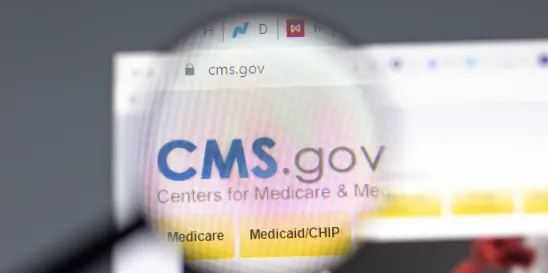On January 9, 2024, the Center for Medicare and Medicaid Services (CMS) sent a letter to New York’s Medicaid director approving New York’s Section 1115 Waiver amendment, which the state submitted for approval on September 2, 2022. During the term of the amendment (January 9, 2024 through March 31, 2027), New York aims to fundamentally reform the way health care services are delivered through its Medicaid program by:
- Investing in Health Related Social Needs (HRSN) via providers working with Social Care Networks (SCNs) which in turn contract with existing Medicaid managed care organizations (MCOs) with a goal of improved quality and health outcomes;
- Improving quality and outcomes of enrollees in geographic areas that have a longstanding history of health disparities and disengagement from the health system, including through an incentive program for safety net providers with exceptional exposure to enrollees with historically worse health outcomes and HRSN challenges;
- Integrating primary care, behavioral health, and HRSN with a goal to improve population health and health equity outcomes for high-risk enrollees including kids/youth, pregnant and postpartum individuals, the chronically homeless, and individuals with serious mental illness (SMI) and substance use disorder (SUD);
- Investing in the workforce with a goal of equitable and sustainable access to care in Medicaid; and
- Developing regionally focused approaches, including new value-based payment (VBP) programs, with a goal of statewide accountability improving health outcomes and equity.
New York’s top down strategy to achieve these goals will come from a newly created Health Equity Regional Organization (HERO) entity. The HERO is a single, statewide entity that will develop “regionally focused approaches to reduce health disparities, advance quality and health equity for overall population, and support the delivery of HRSN services.”[1] The HERO is not responsible for any direct service delivery. Rather, it will conduct administrative activities to support service delivery, coordinate and assess data to improve health quality and equity, and, as the waiver progresses, develop and design value-based payment goals to accompany the state’s HRSN and health equity priorities.
The state will also establish nine regional Social Care Networks (SCNs) one step downstream from the HERO. SCNs are responsible for providing HRSN screenings and referrals as well as case management for those Medicaid beneficiaries receiving HRSN. The SCNs will also be responsible for developing networks of providers for purposes of HRSN service delivery. SCNs will contract with existing Medicaid managed care organizations on behalf of their networks in order to integrate HRSN care delivery within existing Medicaid managed care delivery infrastructure.[2]
The above infrastructure exists to create vehicles to deliver HRSN services to Medicaid beneficiaries through a combination of the fee-for-service and managed care delivery systems. The HRSN services themselves fall into two tiers, with Level 1 available to all beneficiaries and Level 2 reserved for those with complex care needs.[3] Accordingly, Level 1 services aim to provide care coordination (i.e., “referring individuals to existing, state, federal, and local programs that are separate from the newly authorized HRSN set of services”)[4] while Level 2 services are an entirely new benefit package aimed to address an individual’s health through non-medical interventions. For example, HRSN services include a broad range of housing supports, case management and nutritional supports for beneficiaries such as high-risk pregnant individuals and their families to address the impact food insecurity has on healthy pregnancies.
In addition to the tremendous investment in developing and implementing a strategy that addresses health inequities through delivering HRSN services, the waiver also approves other programming to bolster existing services under the Medicaid program. These program elements include:
- Leveraging the existing CMS AHEAD program to provide additional support for safety net hospitals; [5]
- Creating two different programs to encourage participation in healthcare fields which currently face shortages by providing job training and career pathways before entering the workforce and by repaying student loans for those already in the workforce;[6]
- Offering federal matching funds for Medicaid services provided to individuals with substance use disorder to reside in an Institution for Mental Disease;[7] and
- Submitting a waiver amendment to provide continuous Medicaid eligibility for children up to age six.[8]
As a condition for all of the above, the state must increase certain provider rates by at least two percentage points for the duration of the waiver term.
While health equity and support for non-medical health indicators generally remains a theme in 1115 waivers, the approved amendment differs significantly from the proposed amendment in the organizational structures and funds flows used to achieve the waiver’s strategic goals. Table 1, below, details the differences between the waiver submitted to CMS in September 2022 and the version approved by CMS on January 9th.
Epstein Becker & Green will follow up this blog post with two additional insights. The first will cover the HRSN provider network formation and accompanying HRSN delivery, including an analysis of the funds flow from the state, through existing Medicaid managed care organizations and new SCNs and related contracting considerations for plans and providers delivering such services. The second will summarize the waiver’s other programming and examine the legal and regulatory considerations that accompany waiver implementation over the next three years.
Table 1 Comparison of CMS Submitted Waiver Proposal and CMS Approved Waiver
| Category | Proposed 1115 Waiver | Approved 1115 Waiver |
| Programmatic Elements Present in Both Proposed and Approved Waiver | ||
| Strategic Planning | Invest in regional planning through nine regional HEROs for regional strategic planning to reduce health disparities, advance quality, and health equity for overall populations. | Invest in a single, statewide HERO entity for regional strategic planning to reduce health disparities, advance quality, and health equity for overall populations, as well as to support HRSN service delivery. |
| Community Based Organization Network Formation | Invest in Social Determinant of Health Networks (SDHNs) development and performance. | Invest in nine, regional Social Care Networks to provide screening and referral services to Medicaid beneficiaries that are targeted populations for HRSN services. |
| Health Related Social Needs Service Delivery | Invest in Advanced VBP Models that Fund the Coordination and Delivery of Social Care via an Equitable, Integrated Health and Social Care Delivery System. | Invest in HRSN service delivery, including referrals to existing state programs for all Medicaid beneficiaries and various housing supports, nutrition supports, transportation supports, and case management for individuals with complex healthcare needs. |
| Safety Net Hospital Support | Create a Value-Based Purchasing program to support financially distressed safety net hospitals or nursing homes. | Leverage CMS AHEAD model to route additional funds to safety net hospitals through a Medicaid hospital global budget initiative. |
| Workforce Support | Reinvest in Workforce Investment Organizations (WIOs) to build out career pathways, training and other supports for community health workers and related workforces. | Offer two workforce initiatives: (1) Student Loan Repayment for Qualified Providers and (2) Career Pathway Training. The latter will use WIOs in implementing its programming. |
| Programmatic Elements Specific to the Approved Waiver Only | ||
| Designated State Health Programs | CMS will provide additional federal matching funds for various New York state programs. New York will use the “freed up” state funds to support HERO, HRSN services, HRSN infrastructure, and workforce support programmatic elements. | |
| Provider Rate Increase | New York must provide a Medicaid rate increase of at least two percentage points for certain providers and sustain the rate increase for the entire waiver period. | |
| Substance Use Disorder Amendment | New York may receive federal Medicaid matching funds for services delivered to beneficiaries with an SUD who are also residing in an Institution for Mental Disease. | |
| Continuous Eligibility for Children | New York intends to submit an amendment in early 2024 to provide continuous Medicaid eligibility for children up to age six. | |
| Programmatic Elements Specific to the Proposed Waiver Only | ||
| COVID-19 Capacity Building | Capacity building and training to achieve health equity goal (cost incorporated COVID-19 restoration pool and developing a well-trained workforce, see below). | |
| Special Supports for Justice-Involved Populations | Expands Medicaid services for the criminal justice-involved population by providing particular Medicaid services to incarcerated individuals 30 days prior to release. | |
| Digital Health and Telehealth Infrastructure | Creating statewide digital health and telehealth infrastructure to assist providers with the necessary telehealth resources and for reimbursement parity between in-person and telehealth services. | |
ENDNOTES
[1] ny-medicaid-rdsgn-team-appvl-01092024.pdf at 5.
[2] ny-medicaid-rdsgn-team-appvl-01092024.pdf at 85.
[3] “Complex care needs” include: 1) Medicaid high utilizers, 2) individuals enrolled in a New York state designated Health Home, 3) individuals with SUD, 4) individuals with serious mental illness, 5) individuals with intellectual and developmental disabilities, 6) individuals who meet the Department of Housing and Urban Development’s definition of homeless, 7) pregnant persons, up to 12 months postpartum, 8) post-release criminal justice-involved population with serious chronic conditions, SUD, or chronic Hepatitis-C, 9) juvenile justice involved youth, foster care youth, and those under kinship care, 10) children under the age of 6, and, 11) children under the age of 18 with
one or more chronic conditions. https://www.medicaid.gov/sites/default/files/2024-01/ny-medicaid-rdsgn-team-appvl-01092024.pdf at 3.
[4] Id.
[5] https://www.medicaid.gov/sites/default/files/2024-01/ny-medicaid-rdsgn-team-appvl-01092024.pdf at 6.
[6] https://www.medicaid.gov/sites/default/files/2024-01/ny-medicaid-rdsgn-team-appvl-01092024.pdf at 6-7.
[7] https://www.medicaid.gov/sites/default/files/2024-01/ny-medicaid-rdsgn-team-appvl-01092024.pdf at 9-10.
[8] https://www.medicaid.gov/sites/default/files/2024-01/ny-medicaid-rdsgn-team-appvl-01092024.pdf at 10.






 />i
/>i

